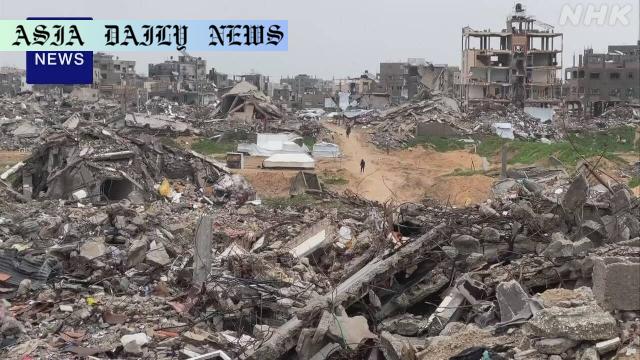Ceasefire: As the first phase of the ceasefire between Israel and Hamas concludes, future steps for peace are being negotiated in Egypt.
Ceasefire talks between Israel and Hamas approach a critical juncture.
Hamas proposes releasing 59 hostages for military withdrawal from Gaza.
Israel seeks to extend the ceasefire while retaining strategic leverage.
Egypt mediates the negotiations amidst regional and global scrutiny.

Introduction: Ceasefire Talks Reach a Pivotal Point
As the first phase of the ceasefire agreement between Israel and Hamas nears its conclusion, the global community watches closely to see whether these prolonged negotiations will yield lasting peace. This critical phase, which has already facilitated the release of 33 hostages and numerous Palestinian prisoners, underscores the complexity and stakes of the dialogue happening in Egypt, with the nation serving as a vital mediator.
A Summary of the First Phase
The six-week-long first phase of the ceasefire stands as a testament to both the deep-rooted conflict and the faint possibilities of resolution. Hamas released 33 hostages during this stage, an act met with simultaneous Israeli efforts to release Palestinian prisoners and detainees. This reciprocal exchange created a foundation for the ongoing conversations—but one fraught with distrust and historical grievances.
The Contentious Debate on Military Strategy
Discussions now hinge on whether Israel will agree to Hamas’ proposition in the second phase: releasing the remaining 59 hostages in exchange for the Israeli military’s full withdrawal from Gaza and an end to active fighting. For Hamas, this represents an opportunity to bolster its credibility and secure key leverage in an ongoing struggle for autonomy. Israel, however, remains wary of what a military retreat might entail, chiefly the possibility of Hamas rearming and regaining ground militarily.
Israel’s Perspective: Extending the Ceasefire
Israel instead hopes to extend the existing ceasefire by another six weeks. This plan aims to allow for the release of further hostages without committing to military retreat. However, critics fear this strategy could prolong instability, without addressing the systemic issues at play.
Egypt’s Role and the Regional Implications
Egypt’s mediation marks a pivotal role in these negotiations—not only for the direct outcome of this conflict but as an example of regional diplomacy. The country’s involvement underscores the multidimensional stakes at play, including the broader implications for Middle Eastern stability, international human rights concerns, and the scrutiny of allied nations watching the proceedings.
A Glimpse Into the Future
At this juncture, whether Israel and Hamas can find a sustainable compromise remains to be seen. With countless lives, immense political pressure, and regional stability hanging in the balance, these negotiations have become a litmus test for the broader aspiration of coexistence.
Commentary
The High Stakes of Ceasefire Negotiations
The ongoing ceasefire negotiations between Hamas and Israel starkly emphasize both the fragility and urgency of peace in the region. As the first phase winds down, it feels almost surreal that a conflict marred by decades of hostility and bloodshed could hinge, at least in part, on mutual agreements brokered under external mediation. For many, the question remains whether these negotiations are a genuine step toward reconciliation or a temporary lull in an otherwise endless cycle of violence.
Egypt’s Crucial Mediator Role
Egypt’s involvement represents more than a diplomatic intercession; it signals a broader regional engagement in the future of Israeli-Palestinian relations. In mediating this high-stakes situation, Egypt not only shoulders the burden of protecting human lives but also solidifies its position as a central figure in Middle Eastern diplomacy. What happens here could influence broader regional dynamics for years to come.
The Moral Quandary and Political Calculus
For those watching from outside, it’s impossible to ignore the ethical dilemmas underpinning this ceasefire process. On one hand lies the humane urgency of securing the release of hostages and detainees, most of whom are civilians. On the other stands the political calculus of territorial control, military posturing, and the ever-present threat of retaliation. In many ways, this negotiation epitomizes the harsh reality of modern warfare—where the pursuit of peace often feels like walking an unforgiving tightrope.
Key Takeaways
At its core, the present ceasefire discussions offer a faint glimmer of hope but also underscore the entrenched divisions that define the region. Whether these efforts succeed in fostering stability, even fleetingly, or collapse under political discord will undoubtedly shape the dialogue surrounding peace in the years to come.


